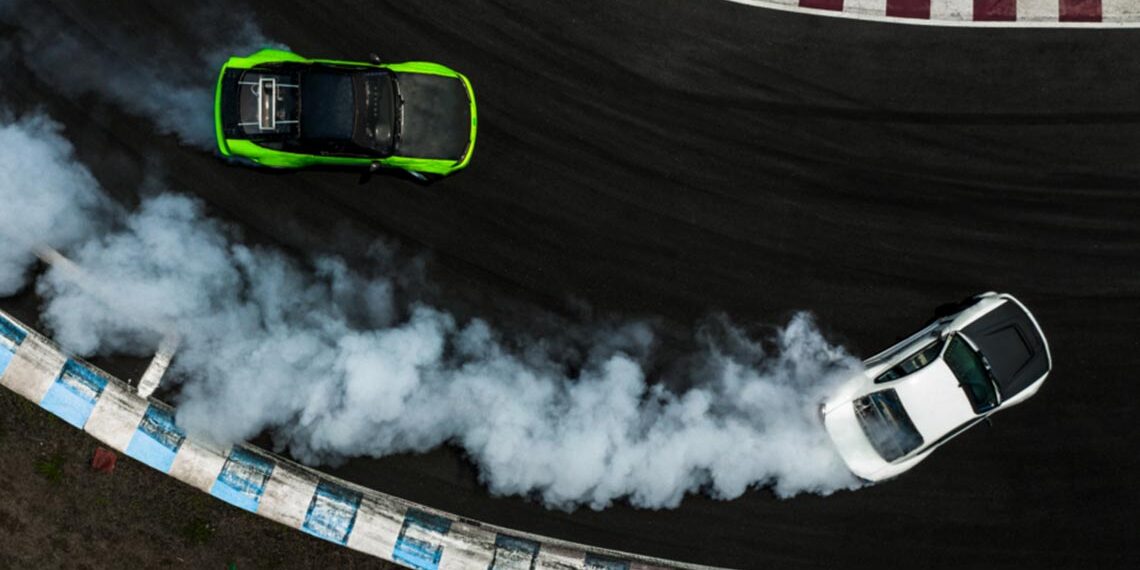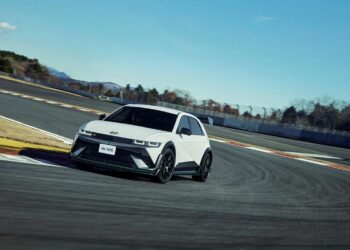The Special Mechanics of Drift Cars
Drifting, while visually spectacular, is more than just a display of driving skill; it is also a testament to the engineering and customization of the vehicles involved. A drift-ready car is a finely tuned machine, modified specifically to excel in the unique demands of the sport. From suspension to tires, every component of a drift car is meticulously adjusted to achieve the perfect balance between power, control, and style.
Key Modifications for Drift Cars
The process of transforming a standard vehicle into a drift machine begins with several key modifications. The most critical among these are the suspension system, tires, differential, and engine tuning.
Suspension is perhaps the most crucial element in a drift car. The suspension must be stiff enough to handle the forces generated during drifting while allowing for precise control over the car’s movement. Adjustable coilovers are commonly used, enabling drivers to fine-tune the car’s ride height, stiffness, and damping characteristics to suit different tracks and driving styles. Lowering the car’s center of gravity improves stability, while stiffer suspension reduces body roll, allowing for sharper, more controlled drifts.
Tires are another vital component, as they are the only contact point between the car and the road. Drifting requires a delicate balance between grip and slip. Many drifters opt for high-performance tires with a specific tread pattern and compound that provide adequate grip while allowing the rear tires to break loose easily. The rear tires are often chosen for their ability to produce consistent smoke and wear evenly, as they are subjected to significant stress during drifting.
The differential is another critical modification. A drift car typically uses a limited-slip differential (LSD) or a welded differential, which ensures that both rear wheels rotate at the same speed. This modification is essential for maintaining controlled slides, as it prevents the inside wheel from losing traction and allows the car to initiate and maintain a drift more effectively.
Engine tuning is also essential, as drifting requires a significant amount of power to break traction and maintain high-speed slides. Turbocharging or supercharging is common, as these modifications provide the necessary power boost. Additionally, the engine’s response must be tuned to deliver power smoothly and predictably, allowing the driver to modulate throttle inputs with precision.
Balancing Power and Control
While raw power is essential for drifting, control is equally important. A well-balanced drift car is one where power is matched with the ability to control that power effectively. This balance is achieved through careful tuning of the engine, suspension, and braking systems.
Braking is often overlooked in drifting, but it plays a crucial role in car control. Many drift cars are equipped with hydraulic handbrakes, which allow the driver to lock the rear wheels independently of the front. This technique, known as the “e-brake,” is commonly used to initiate a drift or make mid-drift corrections. The brake bias is also adjusted to ensure that the car remains stable under heavy braking while allowing the rear wheels to break traction when necessary.
Weight distribution is another key factor in achieving a balanced drift car. Ideally, a drift car should have a near-perfect 50/50 weight distribution between the front and rear axles. This balance ensures that the car behaves predictably during a drift, with neither the front nor rear end dominating the car’s movement. Drivers often relocate components such as the battery and fuel tank to achieve this balance.
Popular Drift Cars
Certain cars have become iconic in the drifting world due to their inherent qualities and ease of modification. The Nissan Silvia (particularly the S13, S14, and S15 models) is one of the most popular drift cars, known for its lightweight chassis, rear-wheel drive, and a wealth of aftermarket support. The Toyota AE86, immortalized by the anime series “Initial D,” is another classic, valued for its agility and balance.
The Mazda RX-7 and RX-8, with their rotary engines and lightweight design, are also favorites among drifters. These cars are prized for their high-revving engines and excellent weight distribution. In the United States, the Ford Mustang has gained popularity in recent years, with its powerful V8 engine and rear-wheel-drive layout making it a formidable drift machine.
Conclusion
The mechanics of a drift car are a blend of art and science. Each modification is carefully chosen to enhance the car’s ability to slide with control, speed, and style. Whether it’s the finely tuned suspension, the high-performance tires, or the powerful engine, every component plays a crucial role in making a car drift-ready. As drifting continues to evolve, so too does the technology and engineering behind these incredible machines, pushing the boundaries of what’s possible on the track.










